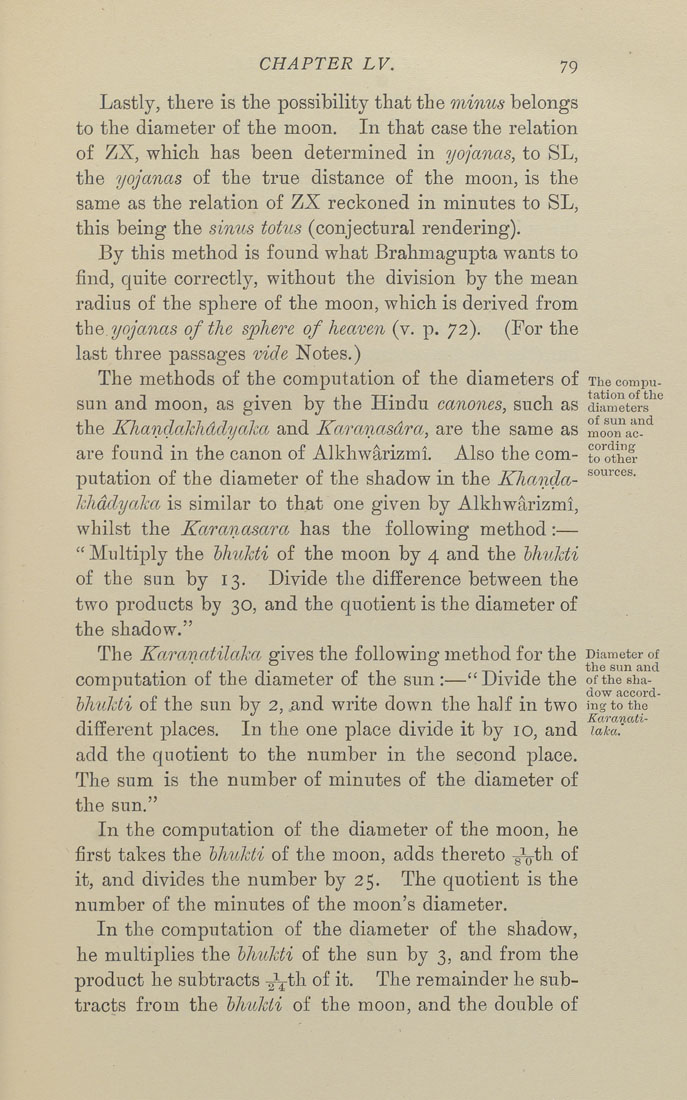CHAPTER LV. 79
Lastly, there is the possibility that the minus belongs
to the diameter of the moon. In that case the relation
of ZX, which has been determined in yojanas, to SL,
the yojanas of the true distance of the moon, is the
same as the relation of ZX reckoned in minutes to SL,
this being the sinus totus (conjectural rendering).
By this method is found what Brahmagupta wants to
find, quite correctly, without the division by the mean
radius of the sphere of the moon, which is derived from
the. yojanas of the sphere of heaven (v. p. 72). (For the
last three passages vide Notes.)
The methods of the computation of the diameters of Thecompu-
-I • 1 j_n TT' J 1 tationofthe
sun and moon, as given by the Hindu canones, such as diameters
the Khandctkhddyaka and Karanctsdra, are the same as mooTac"
are found in the canon of Alkhwarizmi. Also the com- to'^'tw
to other
sources.
putation of the diameter of the shadow in the Khandct-
khddyctkct is similar to that one given by Alkhwarizmi,
whilst the Karctnasara has the following method:—
" Multiply the bhukti of the moon by 4 and the bhukti
of the sun by 13. Divide the difference between the
two products by 30, and the quotient is the diameter of
the shadow."
The Kctrancttilctkct gives the following method for the Diameter of
■-. „, .._ the sun and
computation of the diameter of the sun :—"Divide the ofthesha-
,,-,.„, , -, .-, ii-if>' *^°^ aocord-
bhitkti of the sun by 2, and write down the half m two ing to the
different places. In the one place divide it by 10, and laka'
add the quotient to the number in the second place.
The sum is the number of minutes of the diameter of
the sun."
In the computation of the diameter of the moon, he
first takes the bhukti of the moon, adds thereto -gVth of
it, and divides the number by 25. The quotient is the
number of the minutes of the moon's diameter.
In the computation of the diameter of the shadow,
he multiplies the bhukti of the sun by 3, and from the
product he subtracts •^V'^h of it. The remainder he sub¬
tracts from the bhukti of the moon, and the double of
|








